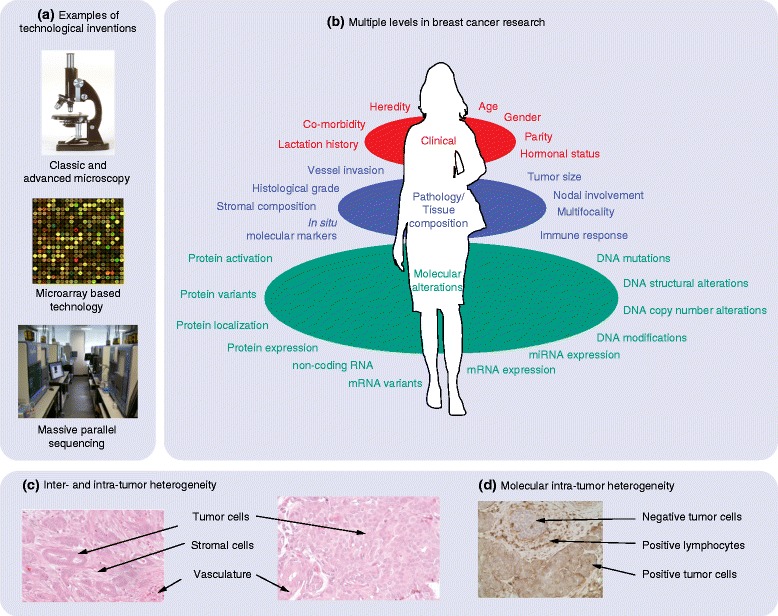Figure 1.

Multiple levels of data integration. (a) Major inventions resulting in extreme numbers of novel observations in cancer biology: the microscope, microarray analyses and massive parallel sequencing technology. (b) The gap between current breast cancer treatment and available molecular data. Most treatment guidelines are based on studies that analyzed a small number of measurements reflecting clinical information (red) and histopathological features (blue). By contrast, an almost unlimited number of measurements can be obtained in multilevel molecular analyses using, for example, microarray-based technologies or massive parallel sequencing technologies where millions of data points can be observed simultaneously (green). miRNA, microRNA. (c) Inter-tumor heterogeneity is illustrated by these microscopic images of two tumors, one having tumor cells with luminal differentiation and abundant stromal tissue (left) and the other having less differentiated tumor cells and scarcely any stromal tissue (right). (d) The cellular composition of tumors shows great variation, as do the tumors themselves. Immunohistochemistry with an antibody against the membrane protein CD44 shows both positive and negative stained tumor cells. In addition, lymphocytes in the stromal environment are positive for this antibody.
